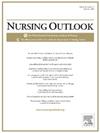2017年至2022年普通急症护理医院护士人员配置趋势
IF 3.7
2区 医学
Q1 NURSING
引用次数: 0
摘要
2019冠状病毒病大流行打破了美国护理人员的历史趋势。目的调查2017 - 2022年短期综合医院注册护士(RNs)、执业护士(lpn)和护理辅助人员的使用趋势。方法采用层次线性模型研究2017 - 2022年时间、医院特征和地理特征对注册护士人员配备强度的影响。与2017年相比,2020年调整后的护士配备强度增加了0.12名护士/ 1000病人日,(p <;.01),但在2021年下降了0.11 RNs (p <;.01),并在2022年进一步降低0.27 RNs / 1000患者日(p <;. 01)。不同州注册护士人员配备强度差异显著(p <;在2021年至2022年期间,LPN的全职当量增加了7%。结论医院注册护士的平均工作强度在2021年和2022年有所下降,但各州的影响有所不同。本文章由计算机程序翻译,如有差异,请以英文原文为准。
Trends in general acute care hospital nurse staffing from 2017 to 2022
Background
The COVID-19 pandemic disrupted historical trends in the nursing workforce in the United States.
Purpose
This study investigated trends in the utilization of registered nurses (RNs), licensed practical nurses (LPNs), and nursing assistive personnel in short-term general hospitals from 2017 to 2022.
Methods
We used hierarchical linear modeling to investigate the effect of time, hospital characteristics, and geographic characteristics on RN staffing intensity between 2017 and 2022.
Discussion
Relative to 2017, RN adjusted staffing intensity increased by 0.12 RNs per 1,000 patient days in 2020, (p < .01), but then decreased by 0.11 RNs in 2021 (p < .01), and further decreased by 0.27 RNs per 1,000 patient days in 2022 (p < .01). RN staffing intensity varied significantly by state (p < .05) and LPN full-time equivalents increased by 7% between 2021 and 2022.
Conclusion
Our findings suggest that average RN staffing intensity in hospitals decreased in 2021 and 2022, and these effects differed between states.
求助全文
通过发布文献求助,成功后即可免费获取论文全文。
去求助
来源期刊

Nursing Outlook
医学-护理
CiteScore
6.20
自引率
7.00%
发文量
109
审稿时长
25 days
期刊介绍:
Nursing Outlook, a bimonthly journal, provides innovative ideas for nursing leaders through peer-reviewed articles and timely reports. Each issue examines current issues and trends in nursing practice, education, and research, offering progressive solutions to the challenges facing the profession. Nursing Outlook is the official journal of the American Academy of Nursing and the Council for the Advancement of Nursing Science and supports their mission to serve the public and the nursing profession by advancing health policy and practice through the generation, synthesis, and dissemination of nursing knowledge. The journal is included in MEDLINE, CINAHL and the Journal Citation Reports published by Clarivate Analytics.
 求助内容:
求助内容: 应助结果提醒方式:
应助结果提醒方式:


